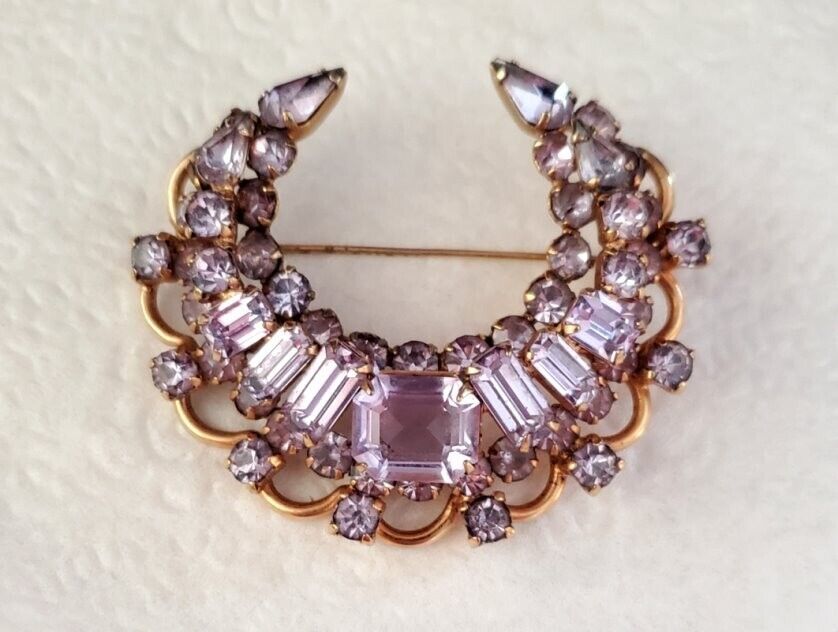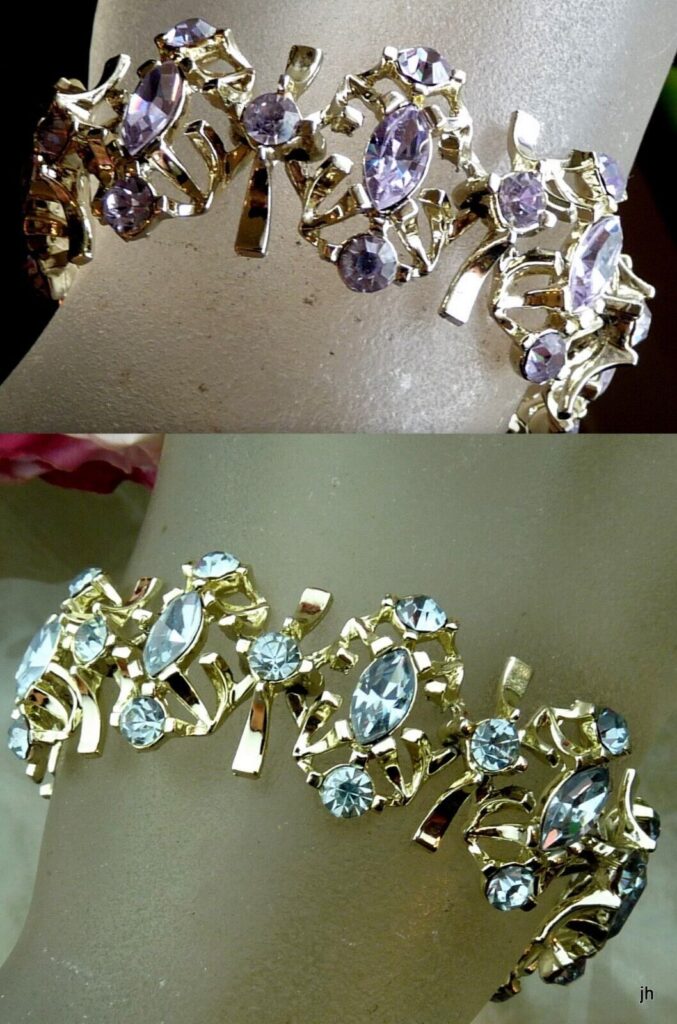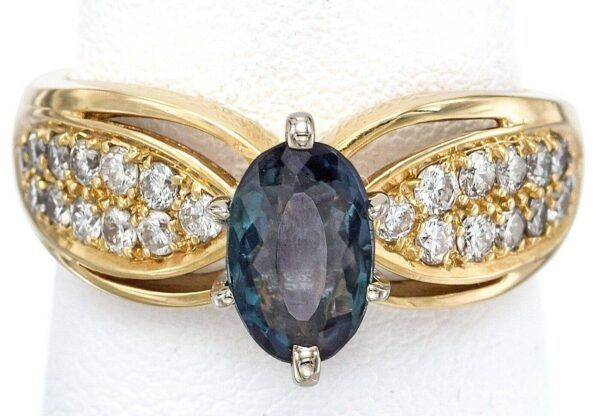#Identifying #Alexandrite #Stones #Fine #Faux #Jewelry #WorthPoint
While some garnets and sapphires are color-changing stones, a favorite among gem-seekers is alexandrite. Stones like these have intrigued fine jewelry lovers for centuries. But did you know there’s a glass stone used in costume jewelry that also goes by the name of alexandrite?
The fine and faux versions of alexandrite change color beautifully when exposed to different light sources. However, the colors they exhibit are vastly different, so they don’t look alike at all. It is wise to become familiar with the attributes of each of these stones because they may hold more value than expected.
History of Natural Alexandrite Gemstones
Alexandrite is a form of chrysoberyl, a mineral that has color-changing properties. It transforms from blue-green or mossy green in natural light to red with a tinge of purple under incandescent light. The stronger the color change is, the more valuable an alexandrite can be.
These intriguing stones were first found in Russian emerald mines in 1834, supposedly on Alexander II’s birthday, so they were named after him even before he became czar. The red and green colors of the stones coordinate with Russian military uniforms and came to represent the aristocracy of Imperial Russia.
Jewelers used alexandrite in their native country, of course, but Tiffany & Co. also marketed a line of rings set with alexandrite in the late 1800s and early 1900s. These stones are even found occasionally in Victorian jewelry originating in England. In the late 1890s, Russian mines were exhausted of their alexandrite supply. It wasn’t until 1987 that alexandrite was found in Brazil. Later sources were discovered in Sri Lanka and East Africa, too. It’s important to remember that old Russian alexandrite stones are more vividly colored and higher in quality than the newer ones.
What to Know about Buying and Selling Alexandrite
When acquiring alexandrite jewelry, the higher-valued pieces will have stones that are eye-clean without inclusions. In other words, if someone offers you a bargain-priced alexandrite with really great coloring, it’s probably an imitation stone. They’re also better suited for rings and pendants since they’re hard to color match, so finding a pair of earrings or a set of matched jewelry is another tell-tale sign that the stones are imitations. Most alexandrites are relatively small, too; many weigh in at one carat or less. The larger the stone (providing the quality is high), the greater the value will be.
Exactly how much do they sell for? High-end auction houses have sold the finest examples of Russian alexandrite stones for millions. However, interested buyers can purchase small stones with less vivid coloring for far less, as well as those from other mines around the globe. Even lesser-quality alexandrites can sell in the high hundreds to the low thousands, though, with some going even higher.
How can you buy a genuine alexandrite confidently? One way is to look for a GIA (Gemological Institute of America) certification. These reports will state whether the stone is a natural alexandrite or a simulant. At the client’s request, an opinion of the origin (Russia or elsewhere) will be included as well. Working with a skilled gemologist or jeweler you trust is another way to avoid the pitfalls of acquiring an alexandrite for a collection.
So, although it’s fun to dream, the likelihood that you’ll run across a genuine example of these stones for a song while on a flea market treasure hunt is low. You might very well find another type of alexandrite set in costume jewelry, however.

Learning to Recognize Alexandrite Rhinestones
Alexandrite rhinestones do change color, but they look nothing like natural gemstones sharing the same name. Depending on the light source, these glass stones shift in hue from light blue to pale purple, so there’s no way to confuse them with natural gems. Swarovski gave them their name in the 1950s, and occasionally old lots of these stones will come on the market with the name “Alexandrite” printed on the packaging. Clearly, the company was inspired by the chameleon aspect of natural alexandrites but decided to develop a color-changing stone with a new look. Beads were also made with the same coloration.
Once you start paying attention to them, you’ll notice these flashy glass stones and beads in finished costume jewelry dating to the 1950s and ’60s. Many different companies marketed jewelry embellished with them, including Eisenberg, Kramer of New York, and Weiss, among a few others. Kramer even named a jewelry collection using these stones “Alexandria” in 1953, as shown in vintage advertising. Some pieces marked “Made in Austria” come on the market occasionally, which isn’t surprising since the stones were manufactured in that country. Unmarked jewelry using Swarovski alexandrite stones can also be found from time to time.
Some of the styles incorporating alexandrite rhinestones aren’t all that clever in design. Nevertheless, they are far more valuable than a comparable piece set with clear stones. For instance, a simple rhinestone necklace marked Weiss with clear rhinestones might sell for $75–100, while the same piece featuring alexandrite stones could bring two to three times as much.

Now you know what to look for in both fine and costume jewelry when it comes to stones named alexandrite. Finding either priced affordably could yield a big score for an adornment collection or inventory.
Pamela Siegel is a freelance writer and author who has been educating collectors for more than two decades. In addition to three books on topics relating to antiques and collectibles, she frequently shares her expertise through online writing and articles for print-based publications. Pamela is also the co-founder of Costume Jewelry Collectors Int’l (CJCI) and the proprietor of Chic Antiques by Pamela.
WorthPoint—Discover. Value. Preserve.




